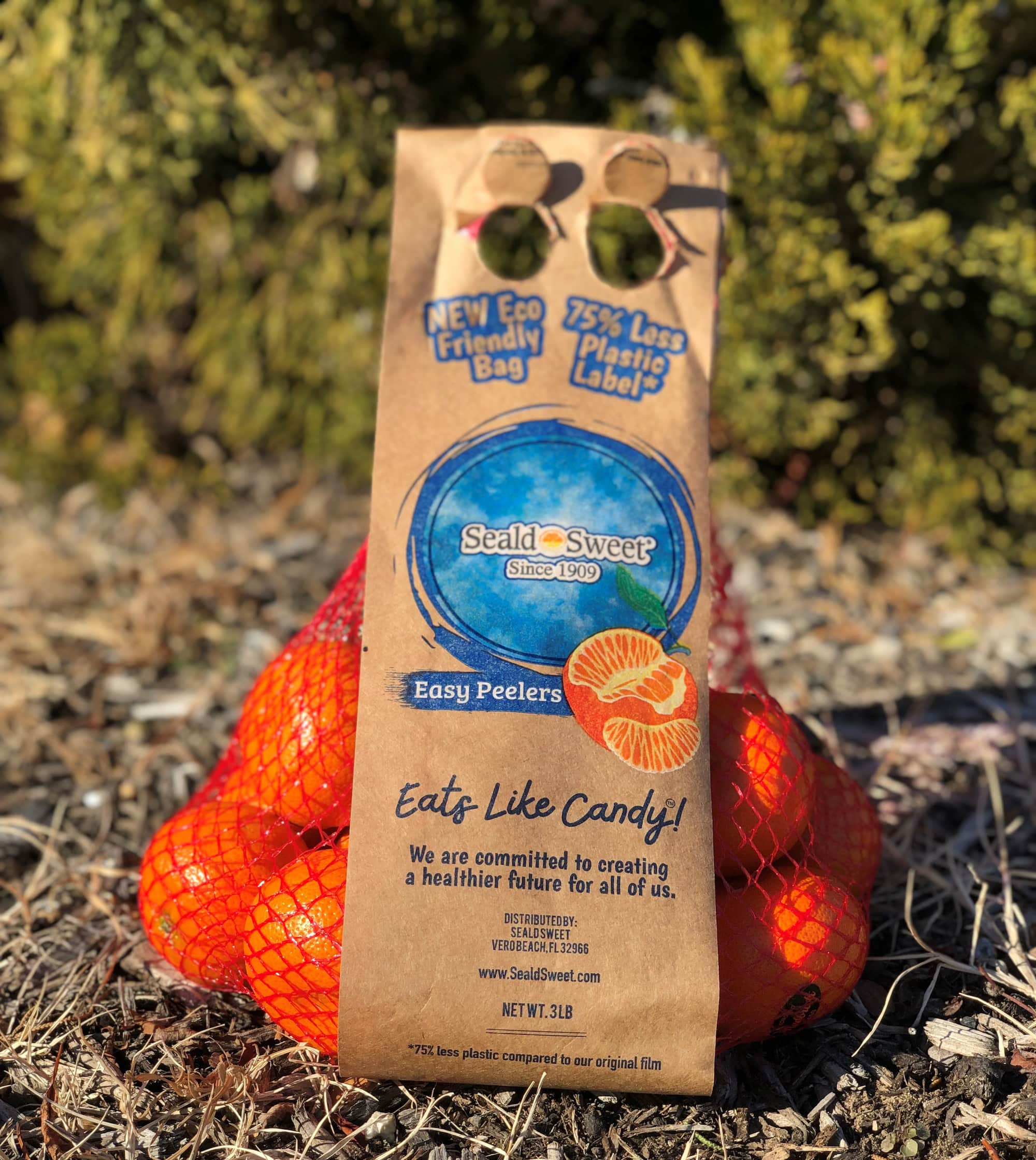Innovation in sustainable packaging for fresh produce is needed now more than ever, and Greenyard USA/Seald Sweet has become a vanguard in finding and implementing sustainable solutions. The company has developed innovative packaging options that balance the need for extended shelf-life and food safety with sustainable packaging alternatives.
UN Goals:
2 Zero Hunger
3 Good Health and Well Being
8 Decent Work and Economic Growth
12 Responsible Consumption and Production
13 Climate Action
17 Partnerships for the Goals
Seald Sweet was founded in 1909 as a cooperative with Florida citrus growers and has been growing, packing, distributing, and selling fresh produce since then. In 1998, Seald Sweet became part of the Greenyard Group, transforming the company into Greenyard USA. Seald Sweet began with citrus more than a century ago, but today the company sells a wide variety of products from around the world like grapes, avocados, blueberries, ginger, pears, vegetables and more. Greenyard is a global leading supplier of fresh, frozen and prepared fruits and vegetables as well as flowers and plants, through its extensive global network of growers, retailers and food service companies.
Greenyard’s purpose is to improve life through pure-plant food experiences, connecting healthy lifestyles and sustainable food chains. Helping people enjoy fruit and vegetables at any moment, easily, quickly and pleasurably, while fostering nature. Its unique Fork-to-Field approach connects all stakeholders in the food value chain and enables a resilient, sustainable business that benefits society as a whole.
Because of Greenyard’s scale and its extensive network of growers, the company is able to optimize transport from all over the world to one or more of its 25 distribution centers and 11 production sites. Based on Greenyard’s unique Fork-to-Field approach, the company defines the specific needs of its customers, and therefore the end-consumer, before every season. Connecting them to the best possible growers to develop year-round programs.
Headquartered in Vero Beach, Florida, Seald Sweet imports produce into the United States via its own state-of-the-art facility located in Swedesboro, NJ, where it packs, stores and distributes to major retailers in the state, in addition the company has a packing house in Nogales, Arizona and an office in California. Greenyard Group operates in 19 countries, and sells in over 80 countries, with almost 8,500 employees worldwide, identifies its people, customer and supplier relationships as key assets, enabling the company to deliver goods and services at a turnover of approximately € 4.6 billion per annum.
Greenyard USA/Seald Sweet is committed to supplying its markets in the most sustainable possible way and, with the help of experienced employees, growers and suppliers of, for example, transport and packaging, it is continually striving to improve environmental, social and economic sustainability.
“Starting with the end-consumer in mind and connecting the demand of our customers to the fresh produce of our growers, we can make it as easy as possible for consumers to eat as many fruits and vegetables as possible for a healthy lifestyle,” says Florens Slob, Group Sustainability & Innovation Director at Greenyard.
The company focuses on five key sustainability topics (i.e., climate change, food waste, water management, packaging and responsible sourcing), and packaging is a key topic within its sustainability strategy.
The challenge: The recycling conundrum
Research has found that while 94% of Americans support recycling and 74% postulate that it should be a top priority, only around 35% of people actually recycle. This disconnect often comes down to inconvenience and perhaps, more so, confusion as to what can be recycled and what cannot.
An example of this is Biaxially Oriented Polypropylene (BOPP Film), which is commonly used in the produce industry. BOPP film, technically speaking, is recyclable, and this type of packaging is often accompanied by a Recycle symbol on the consumer product. This symbol would seem to indicate that the packaging can be recycled by the end-user—but in practice this is often not yet the case.
Recycling companies only recycle BOPP material from production factory waste (e.g., collecting the clean cut-offs from the production of packaging labels or separately collected clean foils). Post-consumer BOPP material cannot be recycled due to food contamination, and, as well, washing, transporting and processing the material in a traditional recycling factory does not make economic sense given the required resources. But, maybe chemical recycling could change this game in the future as foils can be separated and sorted.
Another challenge today is that many bags for packaged produce, such as oranges and onions, are made of different types on plastics (e.g., a High Density Polyethylene [HDPE] mesh bag with a BOPP film label) with two components that are made from different materials and have different recycling types. The BOPP label cannot be recycled, however the HDPE portion can. The solution may seem simple—separate the bag from the label. But it has been found that the average consumer is unlikely to take the extra step to separate the two and will either put in the trash or put it in recycling, where it will eventually be thrown away.
While Europe has a relatively standardized recycling scheme, in the U.S. not all recycling programs are created equal, varying by municipality and state, further contributing to consumer confusion. While rigid plastics like bottles, jugs and clamshells do not present the same complications in terms of recyclability, flexible packaging presents its fair share of challenges.
Flexible packaging is what most produce packaging is made of (i.e., combo bags, mesh bags, films, etc.), but it is one of the materials most recycling centers in the U.S do not like to sort as it requires extra efforts. Also, globally., approximately 90% of curbside recycling pickup is not able to recycle flexible packaging.
With these variables in mind, Greenyard USA/Seald Sweet set out to provide sustainable options and demystify the recycling conundrum.
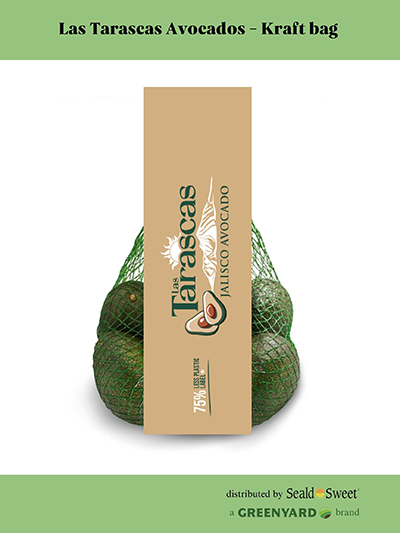
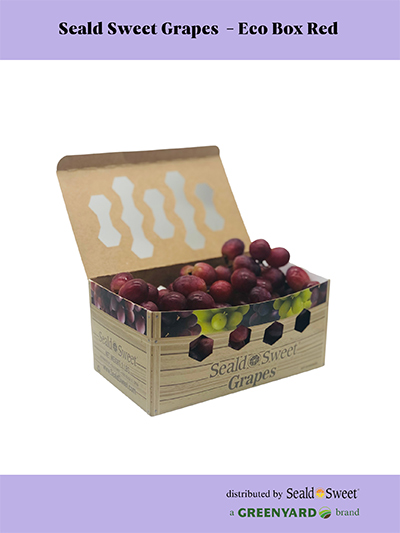
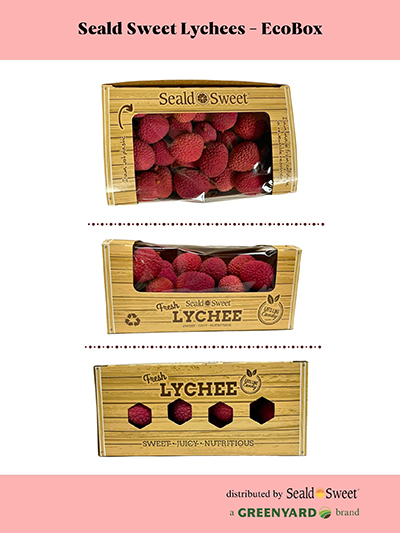
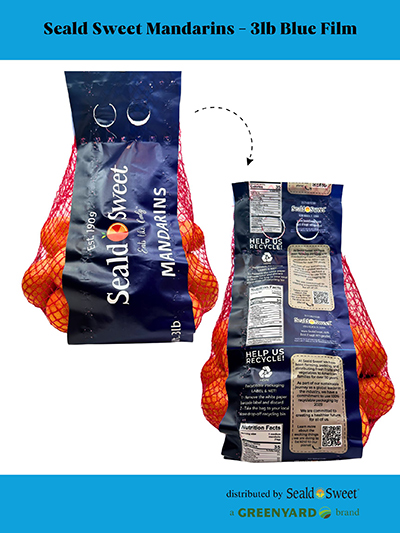
The solution: Packaging innovation and consumer education
In today’s online shopping culture there is a lot of over-packaging and, it would be safe to say, unnecessarily so. But when it comes to fresh produce, packaging usually has an important purpose, whether it is preventing food loss or providing protection for a safer consumer product. Greenyard has developed innovative packaging that supports extended shelf-life and food safety while remaining sustainable.
For Greenyard, the main actors driving the transition into sustainable packaging were consumer and retailer requests for sustainable alternatives, and the company’s goal of going 100% recyclable by 2025 began.
Greenyard USA/Seald Sweet started by developing the Kraft Bag for its clementines. The Kraft bag is made of paper with a thin layer of coating in the bag to provide stability. While the bag is not recyclable because of this extra plastic coating layer, it significantly reduces the amount of plastic required, using less microns and more paper. The company is currently in the process of transitioning the Kraft bag to a 100% recyclable film, furthering the packaging sustainability.
Greenyard USA/Seald Sweet also provides a mesh bag option for its citrus and avocados that is fully recyclable. The mesh bag as well as the label are made from HDPE, and because it is mono-material packaging—both the net and the film are made from the same type of plastic—the bag is fully recyclable and can be placed, intact, into a store drop-off bin.
For its grape packaging, Greenyard USA/Seald Sweet transitioned to a plastic-free EcoBox, created with clay-coated recyclable paperboard that is moisture-resistant, super-sturdy and high-graphic, eliminating the need to use plastic entirely while maximizing the ability for branding and messaging. The 1-pound EcoBox maintains product breathability via vent holes that also allow consumers to see the quality of the fruit inside. The company was given the Paperboard Packaging Council Excellence Award in Sustainability in 2021 for its EcoBox.
At the suggestion of one of its retailers, Greenyard/Seald Sweet decided to use the EcoBox for its lychees as well. The packaging consisted of the same style box as its grapes, but the vent holes contained in the grape EcoBox were replaced with a window on the top and covered with cellulose—which has the appearance of plastic for visibility but without the environmental ramifications.
The company tested the packaging with its retail partners, which strengthen its relationships and positioned Greenyard USA/Seald Sweet as a value partner and strategic supplier who can innovate and test, based on retailers’ requests, according to Helena Fernandez, Marketing Coordinator at Greenyard/Seald Sweet.
One-by-one, Greenyard USA/Seald Sweet is adding its commodities into the goal of 100% recyclable. The company is also committed to reducing the amount of packaging it uses to optimize its packaging footprint without reducing shelf-life. According to its latest Annual Report, “When we use packaging, we use it to protect the products and to ensure a better shelf-life. While Greenyard supports the vision to use as little packaging as possible, it is important to ensure this does not affect shelf-life and generate additional food waste.”
The takeaway: Circular packaging
Greenyard’s goal is to minimize the environmental footprint of its packaging and realize its goal of 100% recyclable packaging by 2025. The Group works to align its packaging with recycling schemes in key markets to ensure that more packaging gets recycled. Not only is the company committed to 100% recyclable packaging, but to sourcing recycled materials as well. Already achieving its goal of using 30% recycled material in non-food contact packaging.
Overall, for its fresh produce packaging from 2020 to 2023 Greenyard Group, has increased its use of cardboard from 5.5 tons to 7.4 tons and reduced its use of plastics from 20.3 tons to 15.8 tons. Over three years, that is 4.5 tons of plastics which of course, even when it would be recycled, comes from a fossil source (oil). In addition, the company has also increased its use of other sustainable packaging for its prepared foods, including glass, metal and wood.
Further, Greenyard proposes that policy makers focus on minimizing food waste while maximizing a high-quality package recycling infrastructure (e.g., through selective collection methods or via recycling technology), which could have a better effect than to focus solely on minimizing the amount of plastic packaging. To date, the company has achieved 98% of its 2025 goal but, according to Slob, “the last 2% are the hardest.” However, the difficulty does not stop Greenyard’s determination and innovation.
The company is researching ways to improve the sustainability of its standup pouches through a project that began in 2022. It also joined the TACTIC research project, led by Pack4Food and Flanders Food, that focuses on assessing and communicating the sustainability of packaging to educate consumers and alleviate any ambiguity that may still currently exist.
Further, in its packaging initiative, Greenyard has committed to zero-deforestation in its supply chain by 2025. Generally considered low to medium risk in the produce industry, the company remains mindful of deforestation risks and focuses on using FSC, PEFC or similar certified paper and cardboard for its packaging.
As well, packaging is just one of Greenyard’s many goals for the future in its Sustainability Roadmap. Aside from its packaging goals, the company has four other specific goals that include adaptation and mitigation of climate change, minimizing food waste, lowering the water footprint on fruits and vegetables and ensuring responsible and sustainable sourcing.
Greenyard is not working to accomplish 100% recyclability just because of policy but to stand out in the crown to retailers and consumers. More and more the company is seeing that, not only in Europe but more and more in the U.S., buyers are expecting companies like Greenyard USA/Seald Sweet to come to the table with these kinds of innovative solutions. Though sustainable packaging can be little more expensive, in the long run, the cost to the planet will be far greater if the nexus of sustainability is ignored.
As Slob points out, “We as an industry as suppliers, packaging vendors, retailers, we need to educate consumers on recyclability, on what's recyclable, what's not and stress the importance because, in the end, we all need to be on the same page. If we're willing to collaborate on this change into sustainable packaging and avoid damaging the planet, we all need to be part of it.”
